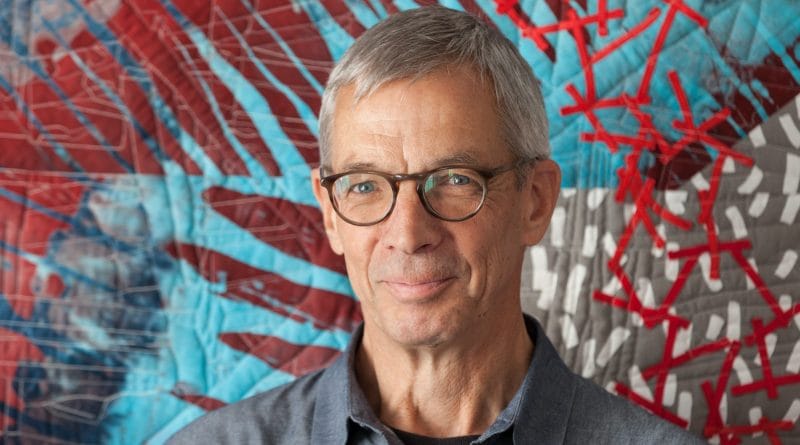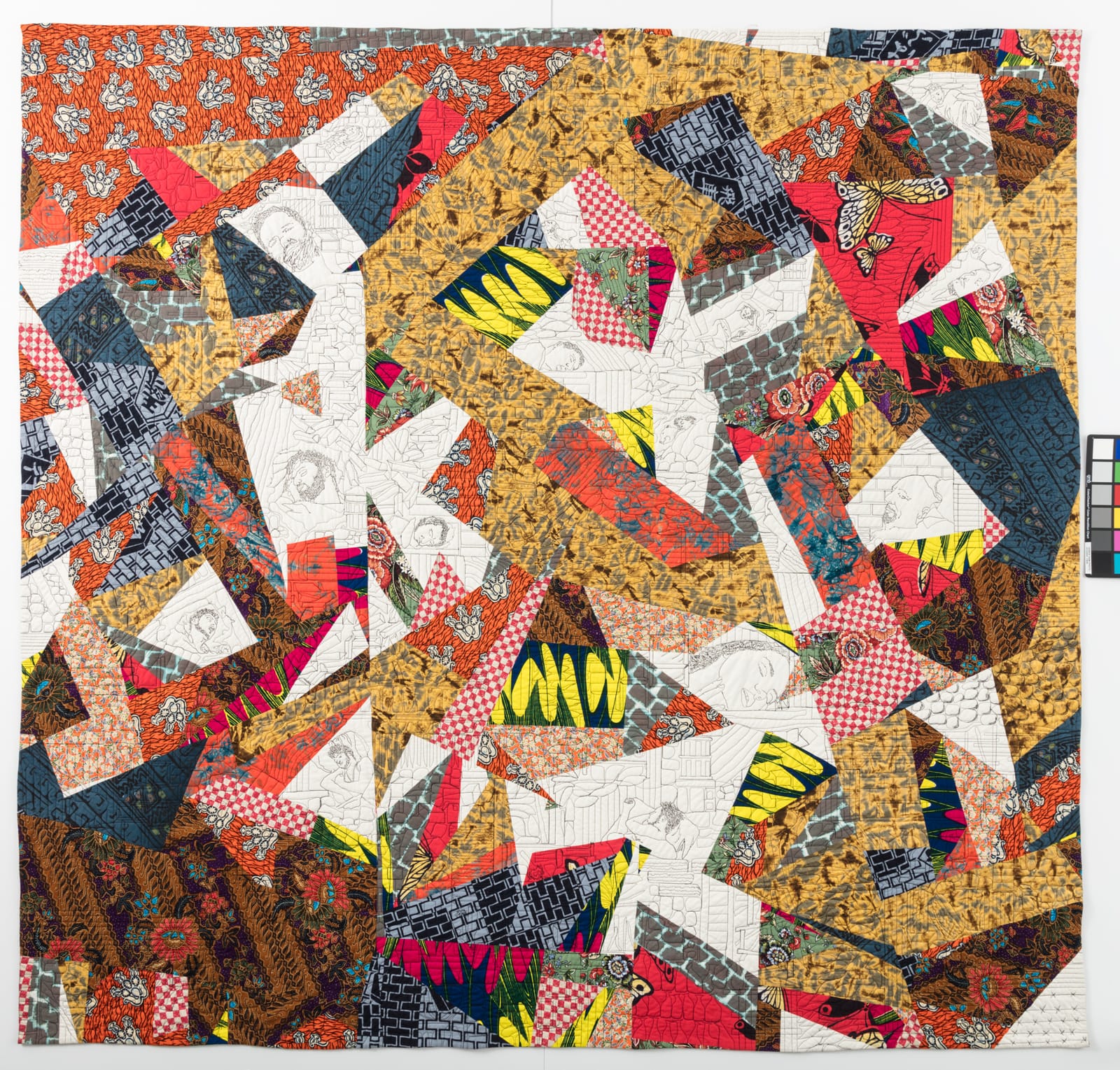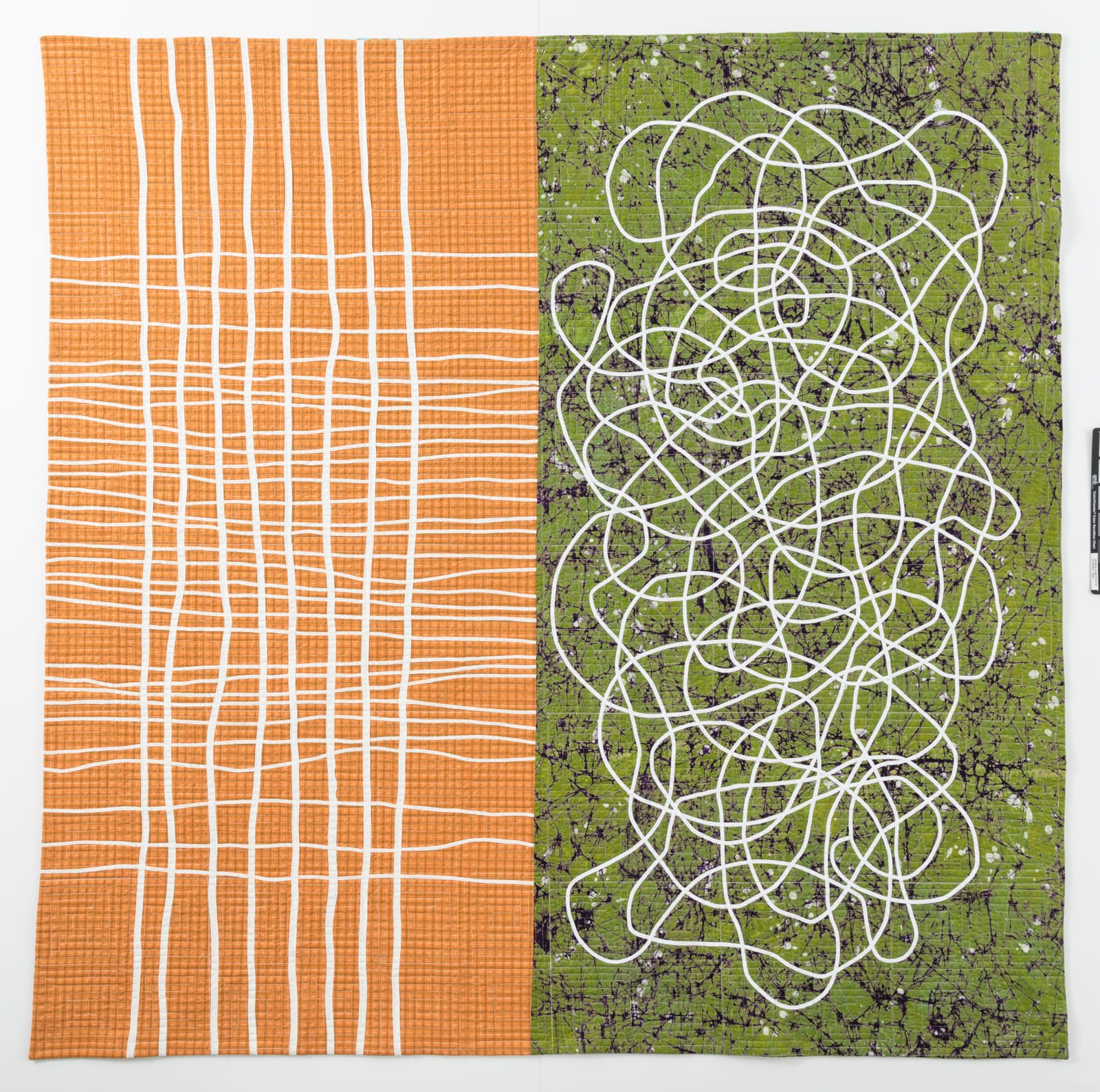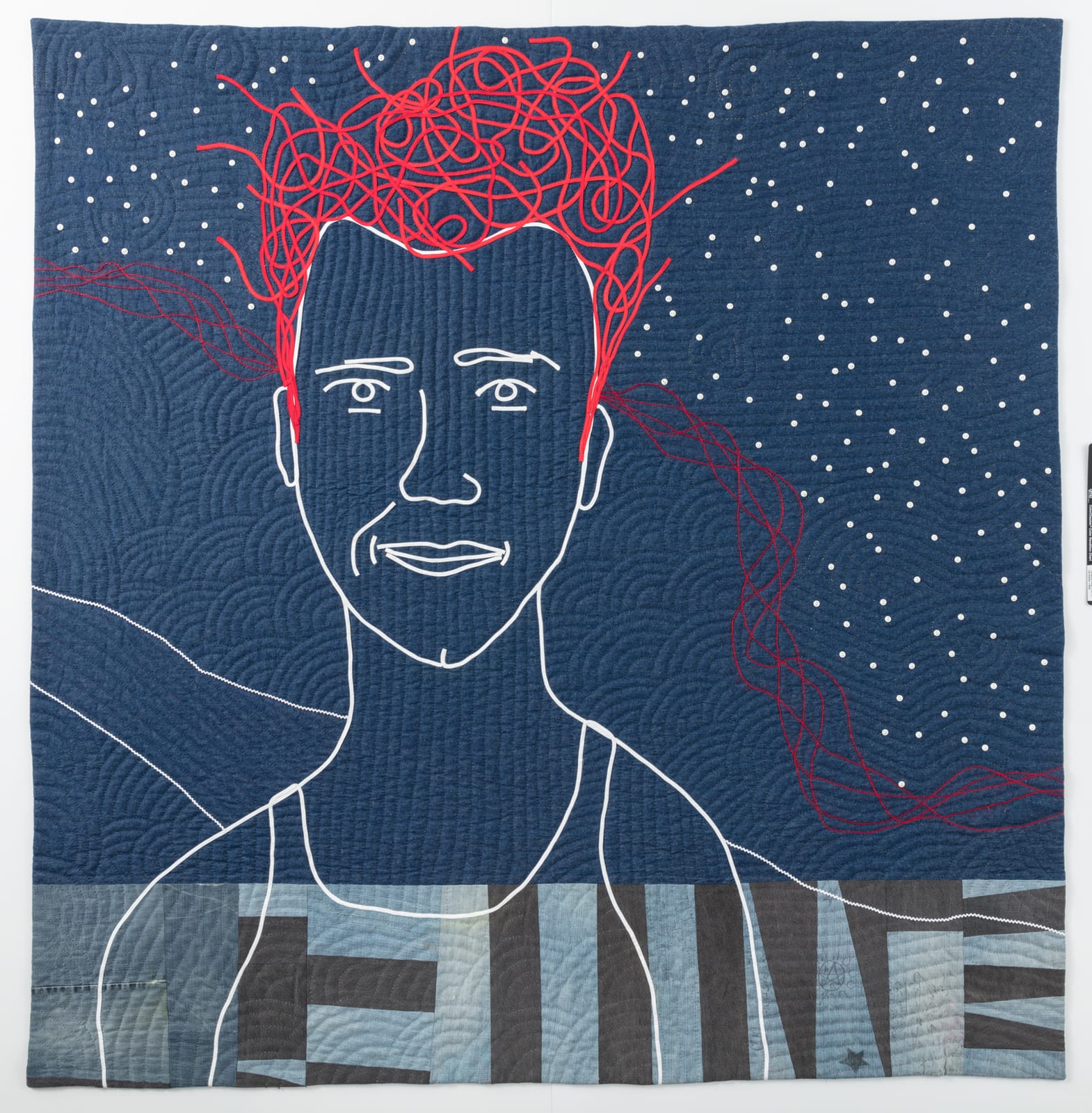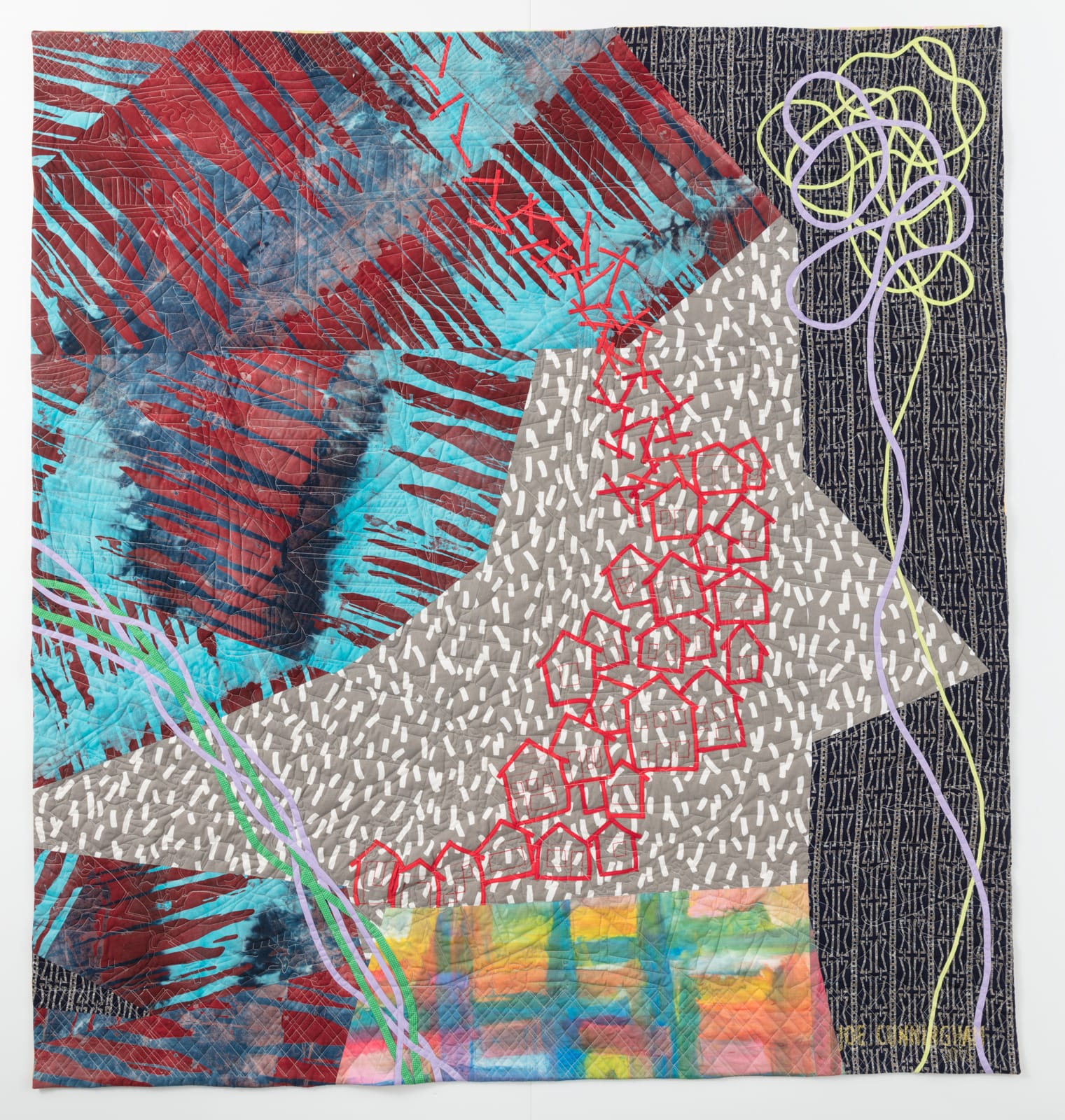Interview with Joe Cunningham
Joe is an esteemed textile artist and expert in the history of American quilting, he creates artquilts inspired by tradition but interpreted in a contemporary key, deconstructing the classic patchwork shapes and transforming them in an absolutely innovative way.
Estimator of Brice Marden’s art, Joe explores in his works, the expressive potentialities of the line, the simplest and most powerful sign known to art.
This is the link to the artist’s website:
Joe when and why did you approach the world of quilting?
In 1979 I met Gwen Marston when she hired me to play guitar with her on some folk music concerts. At the time she was engaged in documenting Mary Schafer’s quilt collection and archive. When I saw some of the quilts I found them captivating and offered to write the text for the catalogue, a chore she was dreading. Gwen told me I would have to learn about quilts in order to do that, so I read all the available literature, about 6 books. The more I learned the more I came to love the whole history of quilts and what they represented. Also, as I interviewed Mary to learn more about her and her collection, I came to feel that this was a field I wanted to learn even more about. Then Gwen showed up at my apartment with a small quilt in a hoop, needles, thread and a large thimble and told me I should learn how to quilt if I was going to write persuasively. After quilting that small quilt, my stitches were good enough to quilt with Gwen at her frame. In a few weeks I wanted to make my own quilt, and soon Gwen and I were making quilts together. As we neared the end of our documentation project,I came up with the idea that in order to promote Mary Schafer’s collection and find an institutional home for it, we should become quilt professionals. So we had business cards printed up and started advertising ourselves that way. Soon, I had a commission to write a magazine article, we were selling quilts and we were on our way.
I saw quilting as a way to make a form of art that could express the whole range of human experience, and I felt that my lifelong but informal study of art could be best put to use in this realm.
Although your quilts are very contemporary, you’re connected to the history of traditional quilting. Can you tell us why and what you are passionate about quilting tradition and how tradition affects the style of your art quilts?
To me, the most important innovation of the American way of quiltmaking was the idea that a person could sew anything together any way she wanted. It was a realm of infinite creativity. And American women in the 19th century were making 2 meter square abstract designs decades or a century before artists came up with this idea. These quiltmakers, these artists, have never been recognized for their gigantic accomplishments. Instead, quilters are thought to have made quilts to salvage precious fabric in a desperate attempt to stay warm. My mission in life is both to bring glory to these old-time quiltmakers, and to exploit the creative freedom they bequeathed us all by making quilts purely my own.
Joe, when sewing your artwork, do you follow a scrupulous design or do you let yourself be guided by experience and instinct?
The way I work is to start out with a subject or theme, to select fabrics that I think might fit that theme and then to start cutting and sewing with a vague image in mind. Eventually the image becomes clearer in my mind as I work. I do not make a sketch or a pattern, instead trusting my instincts to guide me.
“The Sleeping Protesters of Kiev” 2014, 81 x 84,
copyright Joe Cunningham, photo Henrik Kam
Can you tell us about the birth and development of one of your works?
I have long been interested in the way the right and left sides of our brains seem to be in charge of different domains. So when I decided to make my own interpretation of the classic “Lover’s Knot” pattern I chose to make it a picture of the two domains in our minds and also a picture of a marriage. I started by choosing two fabrics that were opposed in design and color, one a random batik from Ghana and one a woven plaid. Then, using bias tape, I constructed a geometric grid on the plaid side and a knotted tangle on the batik side. Showing how two completely different images can become one, conveyed my feelings about marriage as well as my the way we all employ different modes of thought. For the quilting design I programmed the classic Lover’s Knot into my computerized long arm machine and used it in an all over grid.
“BicameralLover’sKnot”,2015, 72″ x 72″ x 72″.
Copyright Joe Cunningham, photo by Henrik Kam
What do you get inspiration from?
I get inspiration from everything I have ever seen, felt or thought.
Are there artists or artistic currents that influence your art?
I particularly like cotton crazy quilts that have no embroidery. Their improvisational piecing techniques taught me how to work. I very much admire the work of Cy Twombly. The artist William Wiley showed me how to trust myself and go my own way. And Brice Marden has been an example of someone who knows how to let simple lines tell a whole story.
Would you define your artquilts as “improv”?
I have never thought of them quite in that way. I prefer to think of my technique as one that allows me to extend the creative moment through the whole process. While I use improvisatory techniques, they are at the service of my theme or subject.
Joe, you’ve always been a musician. How does music influence your way of making textile art?
Learning to write and play music taught me a sense of drama and a feeling for the necessary foreground and background parts of any composition, musical or visual, written or improvised
“Luke Haynes in His American Context” 2012, 74” x 74″,
copyright Joe Cunningham, photo by Henrik Kam
How has your style evolved from the first quilts to the present day?
For many years I thought the best way to honor the great quilt artists of the past was to copy or imitate their work. About 15 or 20 years ago I realized that for me the best way to do this would be to do what those quilters actually did: to make quilts as authentically original and personally meaningful as I could. Since then I have tried to make each quilt a truly personal statement.
“Crazy City: San Francisco” 72 x 72, 2015,
Copyright Joe Cunningham, photo by Henrik Kam
What kind of fabrics do you choose for your work? Do you have a preference for cotton or do you love experimenting with new materials?
In this way I am pretty conventional. I use almostI all lightweight cotton. I have not experimented very much with alternative fabrics.
Are there tools you could never give up?
Once I got a computerized long arm quilting machine—a Handi Quilter Fusion—I have found great joy in creating quilting designs I never could have imagined as a hand quilter. Also I love my Laurel Star iron from Switzerland. With its unlimited steam I can take care of all sorts of problems.
“Happiness Bird Stops By” 2011, 69 x 68,
copyright Joe Cunningham, photo by Henrik Kam
You are a author and co-author of many books on quilting, the first “Mary Schafer and her quilts”, followed by “Twenty little Patchwork Quilts: with full-size templates”, “Amish abstractions: Quilts from the collection of Faith and Stephen Brown” and many others. What intrigues me the most, though, is your book “Men and the art of quiltmaking”. Why a book on quilting men? Can you tell us about it?
Having once written a lecture on the subject, I made a comment about male quilters on some website. Immediately I received an email from Andi Reynolds, who was at that time the editor of the AQS book division. She told me I needed to write a book about it. I said I did not want to do that because there were so many more interesting aspects of quilting to write about.
“If you don’t do it,” she said, “Someone else will, and they will make it a freak show.”
So I interviewed 30 men from a cross section of the quilting world and let each one tell his story.
